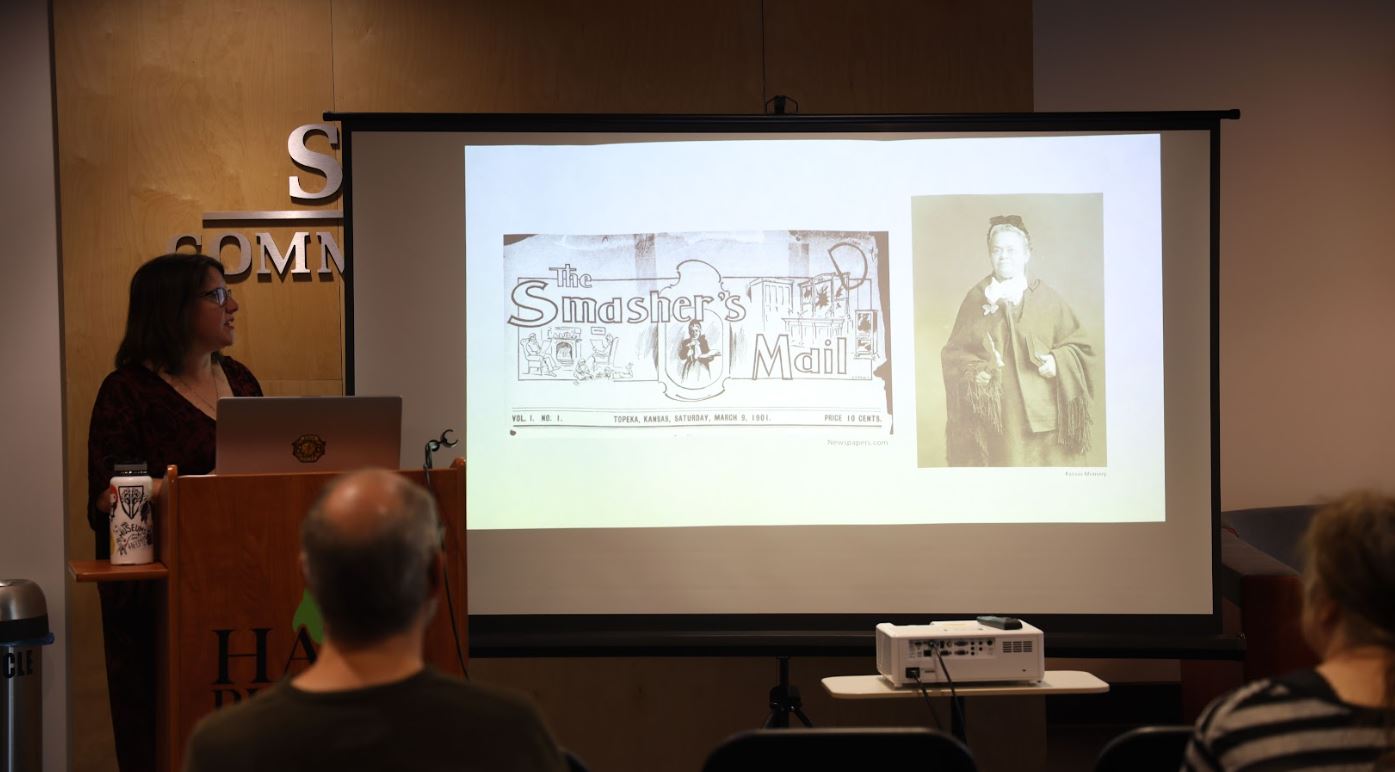By ABIGAIL SHEARER
Tiger Media Network
On Thursday, the Hays Public Library hosted a lecture by speaker Kaite Keckeisen, a local history librarian at the Topeka and Shawnee County Library, who delved into the captivating history of spiritualism. Keckeisen highlighted spiritualism’s far-reaching influence.
“Spiritualism seems to weave its way through every single historical topic,” she said,

Throughout her presentation, Keckeisen examined two primary themes: the evolution of spiritualism across the United States and its unique manifestations within the state of Kansas. Her insights painted a vivid picture of how this fascinating belief system developed and persisted through various cultural and historical landscapes.
“Modern spiritualism began in the 1840s in a small town in the state of New York,” she said.
According to Keckeisen, from this modest beginning, the movement rapidly gained momentum, spreading like wildfire across the nation. It would eventually be recognized as one of the most significant spiritual movements in American history.
At the heart of this phenomenon were the Fox sisters, who captivated audiences with their remarkable claims of communicating with spirits through a series of mysterious knocks and taps. What began as a local curiosity soon attracted attention far beyond their neighborhood, transforming into a traveling spectacle that mesmerized countless spectators.
Keckeisen highlighted the widespread acceptance and fascination with spiritualism that emerged in the wake of their revelations.
“Thanks to the influence of the Fox sisters, spiritual mediums could be found in any town in America,” she said.
Many female mediums emerged during a time when there was no strict hierarchy in spiritualism. One notable figure was Victoria Woodhull, who ran for president and was often labeled “Mrs. Satan” due to her outspoken views on women’s suffrage and free love. Spiritualism attracted people because it allowed them to blend various ideas and religions. This movement gained significant traction during major scientific advancements and especially during times of war. As more people sought connections with the spirit world, they hoped to find reassurance that spirits lived on and that messages from loved ones would indicate they were at peace. Many turned to spiritualism as they felt deprived of a peaceful death, often lacking the comfort of family around them.
There were advancements in how spirits communicated with people. Initially, this involved table tipping, where a group would sit around a table, which would then lift or knock with one of its legs. This method eventually evolved into writing, although it often resulted in little more than scribbles. Later, the invention of the Ouija board allowed for clearer answers and a more straightforward communication process.
Spiritualism in Kansas began with the Bender family. Katie Bender was a supposed medium who allegedly held meetings to communicate with spirits. However, the townspeople suspected that the family was involved in murders, leading to their disappearance in 1872. Carrie Nation, known for her advocacy for prohibition, also strongly opposed spiritualism. She published a newsletter called The Smasher’s Mail, which expressed her views and aimed to counteract ideas that opposed her beliefs.
The rise of spiritualism in the United States represents a profound intersection of cultural, social, and historical forces. The movement swiftly evolved from local curiosity to a nationwide phenomenon, largely propelled by the Fox sisters and their groundbreaking demonstrations of spirit communication. This era opened doors for many women to step into roles as mediums, challenging societal norms and advocating for issues like women’s rights, as seen with figures like Victoria Woodhull.
Amid significant scientific advancements and periods of turmoil, many sought solace in the idea of connecting with loved ones beyond the grave, reflecting a deep human desire for reassurance and understanding regarding life and death. However, the movement also faced skepticism and opposition, evidenced by figures like Carrie Nation. Ultimately, spiritualism not only illuminated the quest for spiritual connection but also revealed the complexities of belief systems during a dynamic period in American history.













You must be logged in to post a comment.